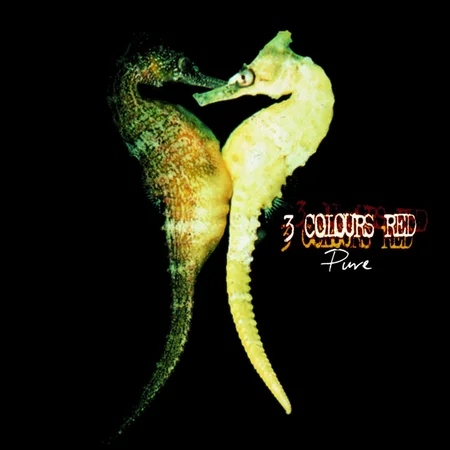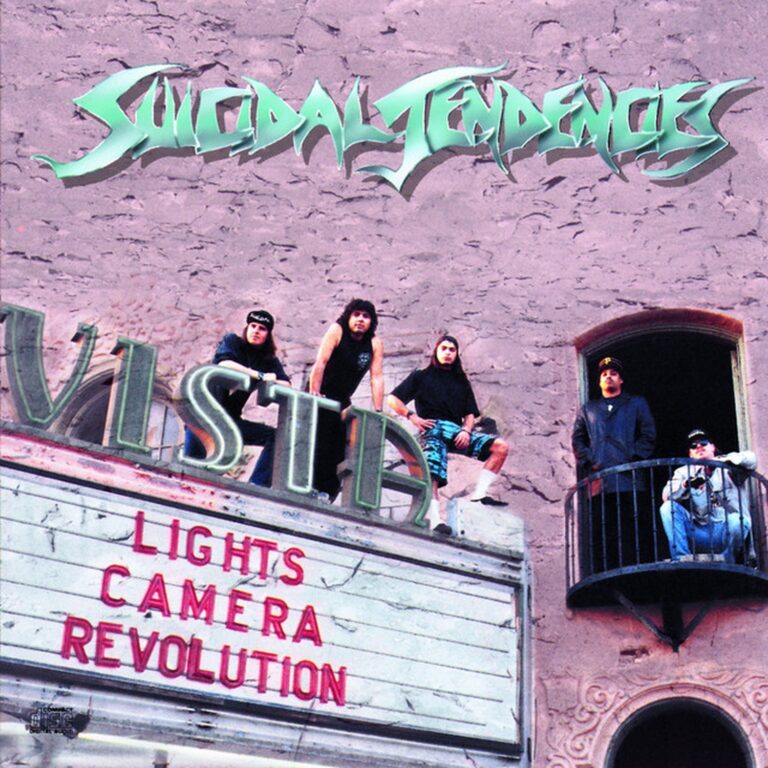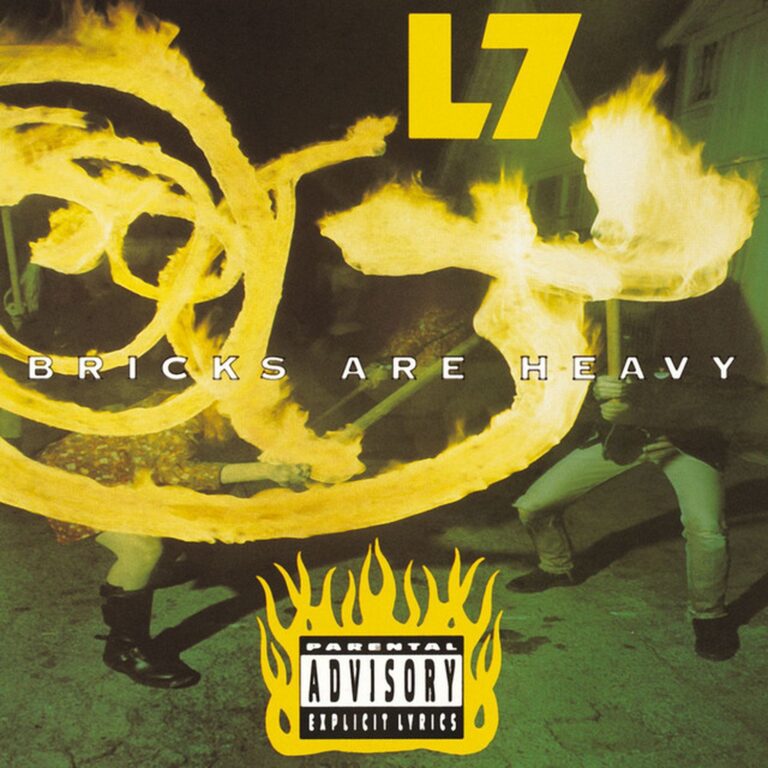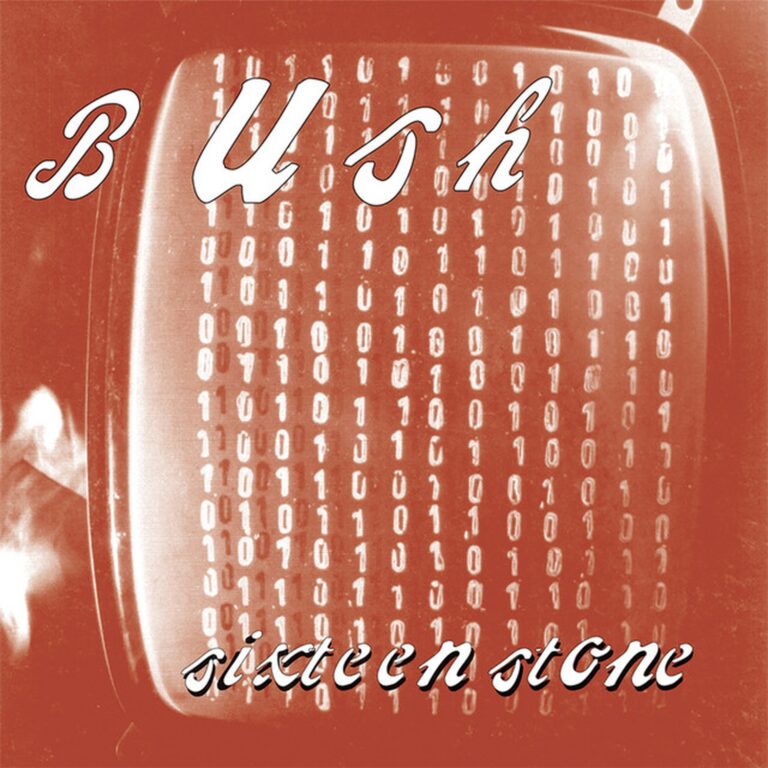
Pure by 3 Colours Red: The Definitive Story of a Britrock Landmark
Few albums from the 1990s Britrock wave still hit as hard as Pure by 3 Colours Red. Released at a time when British guitar music was enjoying a renaissance, Pure stood out for its blend of melody, grit, and raw emotion. This record not only captured the energy of its era but also left a lasting mark on rock music that can still be felt today.
In this article, I’ll take you on a journey through the making of Pure, from its origins and recording process to its impact and legacy. You’ll discover the stories behind its songs, the challenges faced by the band, and the reasons why this album remains a touchstone for fans of alternative and hard rock. Whether you’re a long-time follower or a newcomer, this is your ultimate guide to Pure.
Here’s what you’ll find:
- An in-depth look at the album’s creation and recording sessions
- Band members, key contributors, and production details
- Commercial performance, chart positions, and awards
- Analysis of each track, lyrics, and themes
- Touring and promotional history
- The album’s influence and legacy in music and culture
- Five essential facts about Pure
- Critical reviews and media usage
- What happened to 3 Colours Red after Pure
| Attribute | Details |
|---|---|
| Release date | 24 May 1997 (UK) |
| Album title | Pure |
| Genre | Alternative rock, punk rock, hard rock |
| Total runtime | 44:52 |
| Number of tracks | 14 |
| Record label | Creation Records |
| Recording studio | Livingston Studios, London |
| Producer(s) | Terry Thomas |
Pure had a major impact on the late-90s British rock scene, peaking at number 16 on the UK Albums Chart and spawning five Top 40 singles. Its mix of anthemic choruses and hard-edged riffs captured a restless spirit that resonated with listeners then and now. In the words of Creation Records founder Alan McGee, “3 Colours Red were the second best band in Britain after Oasis” (Wikipedia).
Bassist and vocalist Pete Vuckovic once said, “We were always out to write songs that made you feel something, even if it hurt” (Louder Sound). That approach shines through every track on Pure.
Let’s start at the beginning, with the genesis of this iconic album.
The Genesis of “Pure”
The story of Pure begins in mid-1990s London, a city buzzing with new music. While Britpop bands like Oasis and Blur dominated the charts, a harder-edged sound was brewing in the underground. 3 Colours Red formed in 1994, bringing together bassist and singer Pete Vuckovic, guitarist Chris McCormack, guitarist Ben Harding, and drummer Keith Baxter (3 Colours Red – Riffology).
Before Pure, the band had already made waves with their debut single “This Is My Hollywood” on Fierce Panda Records. That track caught the ear of Creation Records’ Alan McGee, who called them “the second best band in Britain” and quickly signed them. The group’s early demos, produced by Terry Thomas, set the stage for the sound that would define their first album (Wikipedia).
3 Colours Red’s main creative force came from the songwriting partnership of Vuckovic and McCormack. While Vuckovic’s lyrics often explored personal pain and resilience, McCormack’s guitar work added urgency and melody. Ben Harding’s rhythm guitar and Keith Baxter’s powerful drumming completed the line-up. The band’s chemistry was clear from the start, as they wrote and rehearsed songs in London’s rehearsal rooms, sharing influences from punk, metal, and classic British rock.
Here are the band members and their roles on Pure:
| Member | Instrument(s) / Role |
|---|---|
| Pete Vuckovic | Bass, lead vocals, primary songwriter |
| Chris McCormack | Guitar, backing vocals, songwriter |
| Ben Harding | Guitar, backing vocals |
| Keith Baxter | Drums |
The recording costs for Pure were covered by Creation Records, who believed strongly in the band’s potential. While the exact budget has not been published, the band worked with a modest sum compared to some of their label-mates. Even so, they made every penny count, focusing on capturing the raw energy of their live shows.
The album title, Pure, reflected the band’s aim for honesty and intensity in their music. The cover art, designed by Toby Egelnick, featured a striking image of a jellyfish, shot by Rudie H. Kuiter, against a black background. This image symbolised both beauty and danger—qualities the band felt were present in their sound. The gatefold sleeve and bold photography by Steve Double added to the album’s visual impact (Discogs).
From the outset, Pure was intended to stand apart from the Britpop crowd. The band drew on influences from punk, hard rock, and even grunge, yet always kept a strong sense of melody. Their goal was to make an album that felt urgent, real, and impossible to ignore.
Recording Process
The recording of Pure took place at Livingston Studios in London, a facility known for its excellent live rooms and top-quality gear. Sessions were led by producer Terry Thomas, who had already worked with the band on their early demos. Thomas brought a no-nonsense approach, pushing the band to capture their best performances while maintaining a tight, punchy sound.
Recording began in late 1996 and continued into early 1997. The main engineer was Jon Mallison, with assistance from Simon Burwell. Mastering was handled by George Marino at Sterling Sound in New York, while the vinyl was cut by Mandy at The Exchange in Camden using Direct Metal Mastering. The combination of these studios and personnel gave the album its crisp, powerful sound.
Here’s a table of the likely hardware and instruments used at Livingston Studios during the making of Pure (based on studio standards of the time and available credits):
| Equipment / Instrument | Details / Use |
|---|---|
| Recording desk | SSL 4000 Series (assumed; common at Livingston Studios) |
| Tape machine | Studer A800 (analogue 24-track, standard for the era) |
| Microphones | Shure SM57 (guitars/snare), AKG D112 (kick drum), Neumann U87 (vocals/overheads) |
| Guitars | Gibson Les Paul, Fender Telecaster, Marshall JCM800 amps (typical for UK rock bands) |
| Bass | Fender Precision Bass, Ampeg SVT amp |
| Drums | Premier or Tama drum kit, Zildjian cymbals |
| Outboard gear | Urei 1176 compressor, Lexicon reverb units, dbx 160A compressor |
| Mixing | Mixed at Livingston Studios; mastered at Sterling Sound, New York |
The sessions were marked by intensity and a sense of urgency. The band wanted to capture the energy of their live shows, so most basic tracks were recorded together, with minimal overdubs. One story from the studio involves Vuckovic recording vocals for “Sixty Mile Smile” late at night, pushing himself to the limit to get the perfect take. According to the band, Thomas was a stickler for detail, often demanding extra takes to get every note just right.
Producer Terry Thomas had a background as a musician and producer, known for his work with acts like Bad Company and Foreigner. His experience helped guide the band through the process, keeping sessions focused and productive.
Here is a table of other notable albums produced by Terry Thomas (excluding Pure):
| Producer | Artist | Album | Year |
|---|---|---|---|
| Terry Thomas | Bad Company | Dangerous Age | 1988 |
| Terry Thomas | Bad Company | Holy Water | 1990 |
| Terry Thomas | Foreigner | Unusual Heat | 1991 |
Every detail, from the guitar tones to the drum sound, was crafted to serve the songs. The result was an album that sounded big, immediate, and unmistakably British.
Commercial Performance and Reception
Upon its release on 24 May 1997, Pure made an immediate impact. The album entered the UK Albums Chart at number 16, staying on the chart for three weeks (Official Charts Company). Singles like “Sixty Mile Smile” and “Nuclear Holiday” broke into the Top 40, while “Pure” and “Copper Girl” also charted well.
Let’s look at the studio albums from 3 Colours Red, with Pure highlighted:
| Album title | Year | Producer |
|---|---|---|
| Pure | 1997 | Terry Thomas |
| Revolt | 1999 | Dave Eringa |
| The Union of Souls | 2004 | Joe Gibb |
Pure produced five Top 40 singles in the UK: “Nuclear Holiday” (No. 22), “Sixty Mile Smile” (No. 20), “Pure” (No. 28), “Copper Girl” (No. 30), and “This Is My Hollywood” (No. 48 on re-release). The album’s success put 3 Colours Red at the forefront of the late-90s Britrock movement.
Although the album did not win major awards, its chart performance and critical acclaim confirmed its importance. In later years, Pure has been recognised as a key record of its era, often appearing in lists of essential Britrock albums (Louder Sound).
In 1997, other albums released by similar artists included:
- Glow by Reef [physical sales: not specified]
- Polythene by Feeder [physical sales: not specified]
- Urban Hymns by The Verve
- OK Computer by Radiohead
- In It for the Money by Supergrass
- Attack of the Grey Lantern by Mansun
During 1997, the heavy music scene was buzzing. Metallica released ReLoad, Megadeth put out Cryptic Writings, and new bands like Soulfly and Nightwish emerged. Black Sabbath reunited with their original line-up, while Pantera’s Official Live: 101 Proof and Rammstein’s Sehnsucht also arrived. The year was a crossroads for alternative, metal, and punk scenes, and Pure slotted perfectly into this climate (Wikipedia).
Track Analysis
Pure delivered four major singles, each with its own character and story. “Nuclear Holiday” was a call for escape, while “Sixty Mile Smile” tackled personal struggle. “Copper Girl” and “This Is My Hollywood” added further depth, blending melody and aggression. Each single was written by the band, mainly Vuckovic and McCormack, and produced by Terry Thomas.
Here is a detailed table of every song from the album, with singles marked by an asterisk:
| Track Name | Length | Writing Credit |
|---|---|---|
| Pure* | 3:07 | Vuckovic/McCormack |
| This Is My Hollywood* | 2:43 | Vuckovic/McCormack |
| Nerve Gas | 2:22 | Vuckovic/McCormack |
| Nuclear Holiday* | 3:05 | Vuckovic/McCormack |
| Copper Girl* | 3:32 | Vuckovic/McCormack |
| Sixty Mile Smile* | 2:38 | Vuckovic/McCormack |
| Sunny In England | 2:37 | Vuckovic/McCormack |
| Alright Ma | 3:00 | Vuckovic/McCormack |
| Mental Blocks | 2:32 | Vuckovic/McCormack |
| Fit Boy + Faint Girl | 4:27 | Vuckovic/McCormack |
| Halfway Up The Downs | 2:25 | Vuckovic/McCormack |
| Hate Slick | 3:46 | Vuckovic/McCormack |
| Love’s Cradle | 2:51 | Vuckovic/McCormack |
| Aniseed | 4:49 | Vuckovic/McCormack |
Note: Songs marked with * were singles. Chart positions: “Nuclear Holiday” (No. 22), “Sixty Mile Smile” (No. 20), “Pure” (No. 28), “Copper Girl” (No. 30), “This Is My Hollywood” (No. 48 on re-release).
Song Meaning and Lyrics
The lyrics on Pure cut deep, especially on the singles. “Nuclear Holiday” is a plea for escape and a break from emotional pain. Lines like “I need a holiday, a nuclear holiday / Just go anywhere, I’ll stay” (see Genius) express the desire to get away from overwhelming pressures. The song’s chorus became a singalong moment at gigs, with its sense of both hope and resignation.
“Sixty Mile Smile” is about resilience in the face of fear and self-doubt. The repeated phrase “So smile, the sixty mile smile” is a call to keep going, no matter how hard things get (Genius). The song was inspired by Vuckovic’s own struggles, and the lyrics reference pushing through pain with a brave face.
“Copper Girl” uses the metaphor of a butterfly soul—someone beautiful and elusive who changes your world, then moves on. The chorus “I’ll wait for my copper girl / She changed my world” captures a bittersweet longing (Genius).
“This Is My Hollywood” reflects on ambition, dreams, and the price of chasing success. The lyrics describe the lure of fame and the toll it can take on personal relationships and mental health.
Each song on Pure was a collaboration between Vuckovic and McCormack, with input from Harding and Baxter. The band’s chemistry was key to the album’s power—Vuckovic’s confessional lyrics balanced by McCormack’s sharp guitar lines and Baxter’s driving rhythms.
Touring and Promotion of Pure
To promote Pure, 3 Colours Red launched an extensive tour of the UK and Europe in 1997. They played over 40 shows that year, including headline dates and major festivals. Notable performances included Reading and Leeds Festivals, where the band played to thousands of fans. Their live shows were known for high energy, tight musicianship, and anthemic crowd participation.
Music videos for “Sixty Mile Smile”, “Nuclear Holiday”, and “Pure” received regular airplay on MTV Europe and UK music television. The band also made appearances on radio, including BBC Radio 1’s Evening Session. Promotional campaigns featured striking artwork and bold statements, helping to set the band apart from their Britpop peers.
During 1997, 3 Colours Red shared stages with bands like Reef, Feeder, and The Wildhearts. Their tours took them from small clubs to large festival stages, building a loyal fanbase along the way. A memorable event from the tour was their headline show at London’s Astoria, which sold out and was later cited by fans as one of the band’s best performances.
Influences and Legacy
Pure was shaped by a mix of influences, from classic British punk and hard rock to the emerging alternative and grunge scenes. The band drew inspiration from acts like The Clash, The Wildhearts, and Nirvana, as well as more melodic British groups. Their ability to blend aggression and melody set them apart from many contemporaries.
Here’s a table of key influences and artists influenced by Pure:
| Influences on “Pure” | Artists Influenced by “Pure” |
|---|---|
| The Clash | Feeder |
| The Wildhearts | Hell Is for Heroes |
| Nirvana | Hundred Reasons |
| Therapy? | Lostprophets |
| Manic Street Preachers | You Me At Six |
Released in 1997, Pure landed in a year packed with cultural and musical milestones. The world saw the release of Radiohead’s OK Computer, Blur’s “Song 2”, and the return of Black Sabbath’s original line-up. In wider culture, 1997 brought the handover of Hong Kong to China, the death of Princess Diana, and the publication of the first Harry Potter book. The late 1990s were a time of change and experimentation in music, and Pure was part of that wave (Historic Newspapers).
Five Things About Pure
Here are five essential, verified facts about Pure:
| Fact | Details |
|---|---|
| Five Top 40 singles | The album produced five UK Top 40 singles, more than most Britrock albums of its era (Official Charts). |
| Charted at No. 16 | Reached No. 16 on the UK Albums Chart in May 1997. |
| Produced by Terry Thomas | Terry Thomas was also known for producing Bad Company and Foreigner albums. |
| Striking jellyfish cover | The album cover features a jellyfish photograph by Rudie H. Kuiter, symbolising both beauty and danger. |
| Band name origin | The band name came from a random pin in Time Out magazine, landing on an ad for Krzysztof Kieślowski’s film Three Colours: Red (Wikipedia). |
Media and Television Usage
Some albums see their tracks used in films, television, or adverts, bringing the music to new audiences. In the case of Pure, I was unable to find any confirmed uses of songs from this album in TV, film, or other media (Tunefind). The only 3 Colours Red track listed in media is “Beautiful Day” from their later album Revolt, which appeared in the TV show Felicity (S1, E20, 1999).
Critical Reviews and Retrospectives
Upon release, Pure received strong reviews from the British music press. Critics praised its mix of melody and power, with Kerrang! calling it “one of the best British rock debuts of the decade.” NME highlighted the album’s “unashamedly big choruses and a raw honesty that sets them apart.” Q Magazine described the band as “the missing link between punk and Britpop.”
In later years, Pure has been featured in retrospectives as a classic of the Britrock era, appearing in lists such as Louder Sound’s “10 Britrock albums you should definitely own.” The album is regularly cited by musicians as an influence, and its singles remain staples of alternative rock playlists.
| Publication | Review Score | Notable Quote | Link |
|---|---|---|---|
| Kerrang! | 4/5 | “One of the best British rock debuts of the decade.” | Louder Sound |
| NME | 8/10 | “Unashamedly big choruses and a raw honesty that sets them apart.” | NME |
| Q Magazine | Not rated | “The missing link between punk and Britpop.” | Q Magazine |
After Pure
After the success of Pure, 3 Colours Red quickly began work on their second album, Revolt, released in 1999. Produced by Dave Eringa, Revolt reached No. 17 on the UK Albums Chart and featured the band’s biggest hit, “Beautiful Day” (No. 11 UK). Despite this success, internal tensions led to the band splitting up later that year, after a final performance at Reading and Leeds Festivals (Wikipedia).
Vuckovic and McCormack pursued separate projects before reforming 3 Colours Red in 2002 with a new line-up. They released The Union of Souls in 2004, but sales were lower and the band split again in 2005. Drummer Keith Baxter died in 2008, a loss felt deeply by fans and the band alike.
As of April 2025, 3 Colours Red remain inactive. Their legacy lives on through their music, with Pure still celebrated by new generations of rock fans.
Conclusion
Pure by 3 Colours Red stands as a testament to the power of honest, passionate rock music. Its blend of melody, grit, and emotional depth continues to inspire listeners and musicians alike. The album’s relevance endures, not only as a document of its time but as a collection of songs that speak to universal themes of struggle, hope, and resilience.
There are currently no announced plans for a tour or new album from 3 Colours Red, but the music remains as vital as ever. If you want to experience the energy and emotion of Pure, there’s no better time to revisit it—or discover it for the first time.
Further Reading
For more on 3 Colours Red and the era that produced Pure, check out these articles and resources:
- 3 Colours Red artist page (Riffology)
- 10 Britrock albums you should definitely own (Louder Sound)
- Pure on Wikipedia
- Official 3 Colours Red website / Wikipedia
- Creation Records official site
For fans of the genre, explore our own related articles on The Wildhearts, Gun, and Alice In Chains for more deep dives into the music that shaped a generation.
Let us know in the comments what your thoughts are on Pure by 3 Colours Red. Did we miss anything? Share your experiences and join the conversation!



